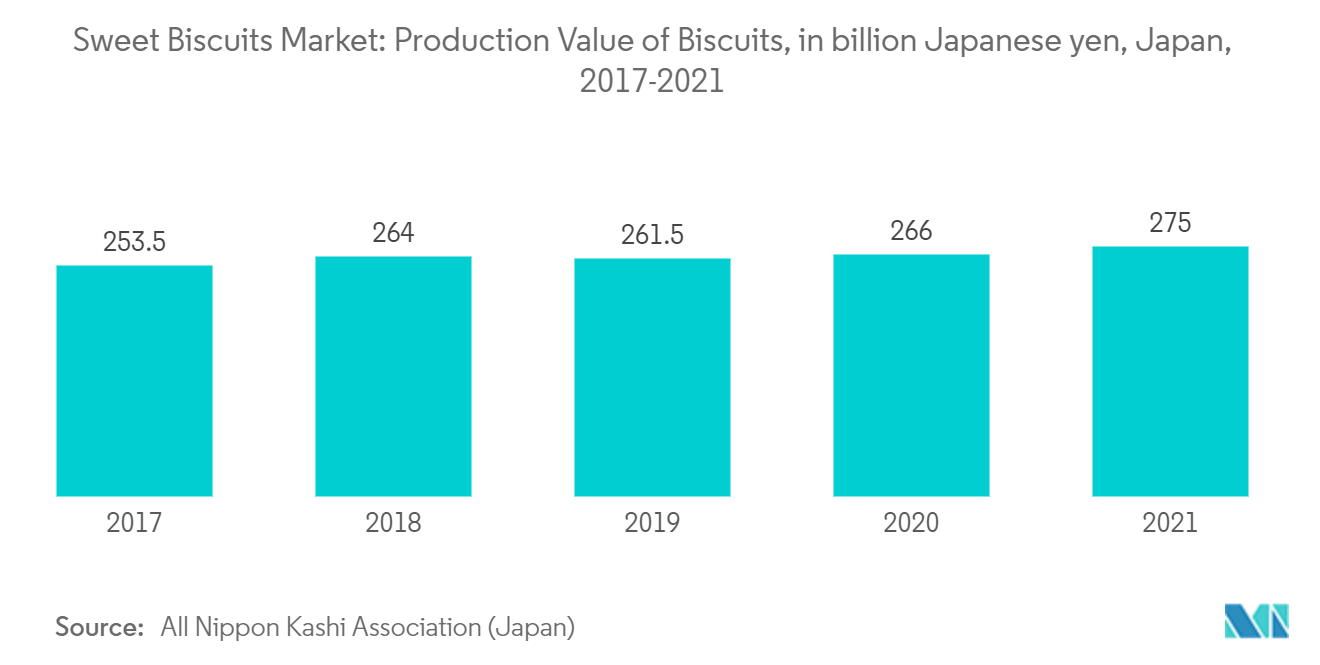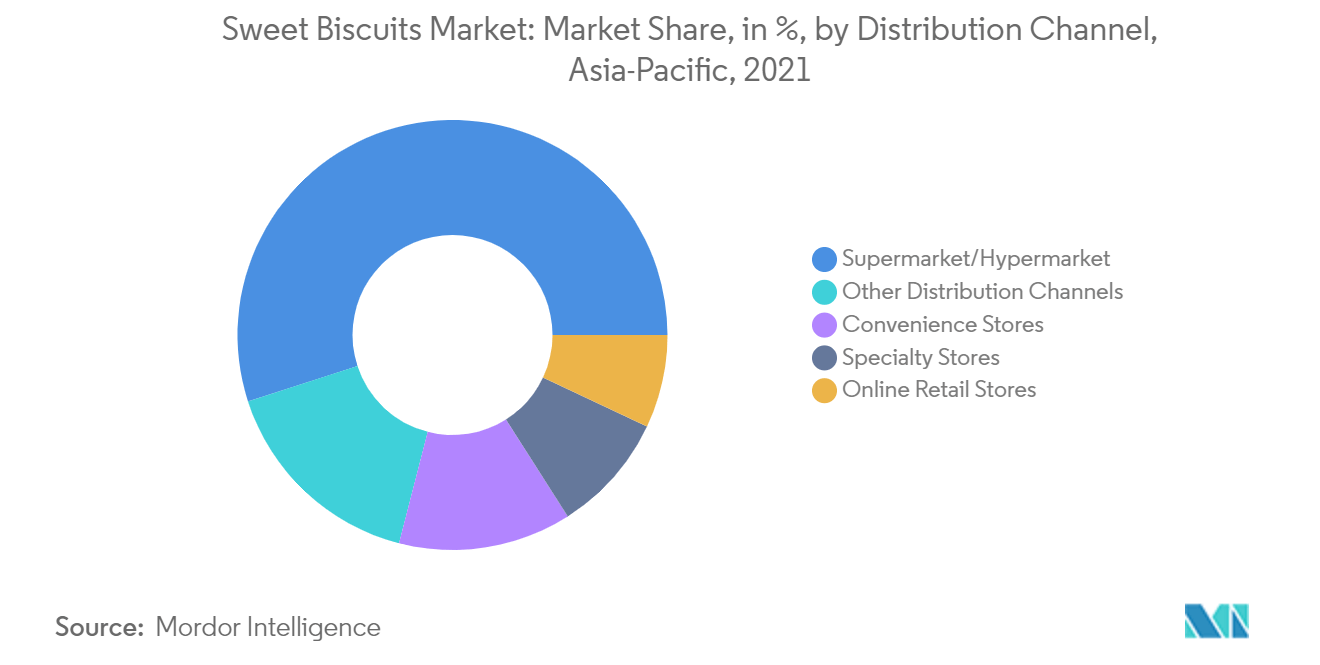Market Trends of Asia-Pacific Sweet Biscuits Industry
This section covers the major market trends shaping the APAC Sweet Biscuits Market according to our research experts:
Product Innovation with New Formulations Is Attracting Consumers
The demand for biscuits is increasing due to the growing demand for healthy snacks and an increase in per capita consumption in developing countries of the Asia-Pacific region. For instance, in July 2021, ITC Limited's Sunfeast, one of India's most preferred brands in biscuits and cakes, launched a new-to-market biscuit experience with the launch of Sunfeast All-Rounder. It is a new potato biscuit, crunchy, and one of the thinnest biscuits ever manufactured in India.
Due to the changing demographics and high levels of disposable income, the Asia-Pacific region's urbanization is opening up new opportunities for growth. Consumers are being drawn to frequent launches of basic products with new formulations, such as low-fat, gluten-free, low-carb, organic, and high-fiber biscuits, which is boosting market expansion. For instance, in January 2020, Mondelez India launches Cadbury Chocobakes, bringing their signature chocolate flavor to a cookie format. Sweet biscuits are the fastest-growing sector owing to their taste and healthy ingredients. Biscuits in the region include a variety of crisp, baked goods like cookies, crackers, pretzels, and pies among others.

Supermarket/Hypermarket Holds A Prominent Share
Supermarkets/hypermarkets have always had a strong lead in biscuit sales as they have the extra benefit of influencing the consumer's decision to make a purchase among the huge range of items available on the market. Supermarkets/hypermarkets are the most common sales channels for biscuits across the world, owing to their large retail area and ability to appeal to a wide range of preferences.
Due to the huge discounts, offers, product bundling, and other consumer-oriented schemes accessible to customers, shopping at hypermarkets/supermarkets is also perceived as beneficial and effective. They have a strong foothold due to the large number of brands available and regular discount offers. These are the channels that biscuit manufacturers choose to introduce new products and expand their market share. This is mostly due to their expanding geographical footprints in comparison to other distribution channels, which are also expanding their footprints across the region. Additionally, players, like Mondelez India, announced their plan to expand their biscuit portfolio (Oreo) with an intent to increase their distribution network in the country. According to the Associate Director of marketing (Biscuits), Mondelez India, in 2019, the Mondelez India added nearly 242,000 stores (selling biscuits), of which 107,000 were in rural areas and the remaining 135,000 in urban areas.
In the biscuit category, supermarkets/hypermarkets provide a lot of options. As a result, there is strong competition on the store shelf to distinguish various kinds of biscuits. According to Motilal Oswal Group, the Future Retail has a total of 318 Big Bazaar stores across the country in 2021. This is driving the biscuit producers to reinvent and reposition their products as a luxury in-store item, catering to certain customer demands such as sugar-free, high fiber, gluten-free, taste, packaging, or targeting specific age groups. Due to the wide variety of biscuits available, supermarkets and hypermarkets are gaining market share. Some of the major key players in the segment are Mondelez International Inc., Britannia Industries, ITC Ltd.

